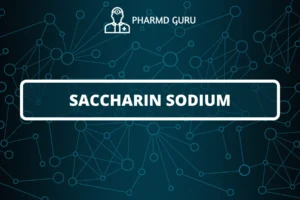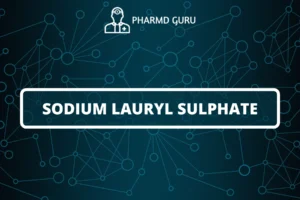Tartaric acid is a naturally occurring organic acid found in many fruits, particularly in grapes. It is widely used in the food and beverage industry as an acidulant, flavor enhancer, and stabilizer. Here’s some information on the preparation, test for purity, assay, and medicinal uses of tartaric acid:
SCROLL DOWN TO THE BOTTOM OF THIS PAGE FOR ACTUAL NOTES.
Preparation of Tartaric Acid:
Tartaric acid can be prepared through several methods, including:
- Extraction from natural sources: Tartaric acid is commonly extracted from the sediment known as “wine lees” or “wine dregs.” It is obtained as a byproduct of the winemaking process, where it precipitates during fermentation and aging.
- Chemical synthesis: Tartaric acid can also be synthesized chemically using various starting materials, such as maleic anhydride or glyoxal. The synthesis involves several chemical reactions to convert these precursors into tartaric acid.
Test for Purity of Tartaric Acid:
Several tests can be conducted to assess the purity of tartaric acid, including the following:
- Melting point determination: The melting point of pure tartaric acid is around 170-172°C. A melting point analysis can be performed to check if the observed melting point matches the expected range.
- Solubility test: Tartaric acid is highly soluble in water and slightly soluble in ethanol. A solubility test can be conducted to confirm its solubility characteristics.
- Fourier-transform infrared spectroscopy (FTIR): FTIR analysis can be used to identify the functional groups present in the tartaric acid sample and compare them with the expected spectrum of pure tartaric acid.
Assay of Tartaric Acid:
An assay is performed to determine the concentration or purity of tartaric acid in a given sample. The assay method for tartaric acid typically involves titration with a standardized base or acid solution to measure the acid content.
Medicinal Uses of Tartaric Acid:
Tartaric acid has limited direct medicinal uses, but it can be used as an excipient in the pharmaceutical industry. It is used to modify the pH, enhance stability, and improve the taste of certain medications. Tartaric acid can also be found in some over-the-counter oral health products to aid in the prevention of dental plaque and tartar buildup.
It’s important to note that the primary applications of tartaric acid are in the food and beverage industry, where it is used as an acidulant and flavoring agent. It is generally recognized as safe (GRAS) by regulatory authorities when used in accordance with approved levels.
ACTUAL NOTES:
PATH: PHARMD/PHARMD NOTES/ PHARMD FIRST YEAR NOTES/ ORGANIC CHEMISTRY/ PHARMACEUTICAL ORGANIC CHEMISTRY/ TARTARIC ACID.




